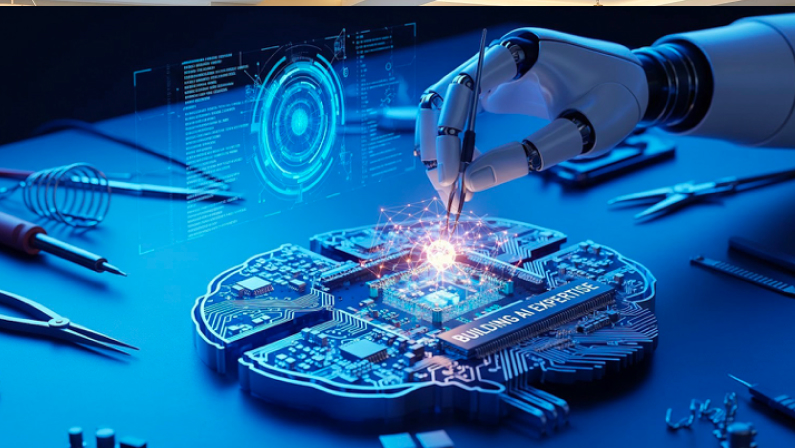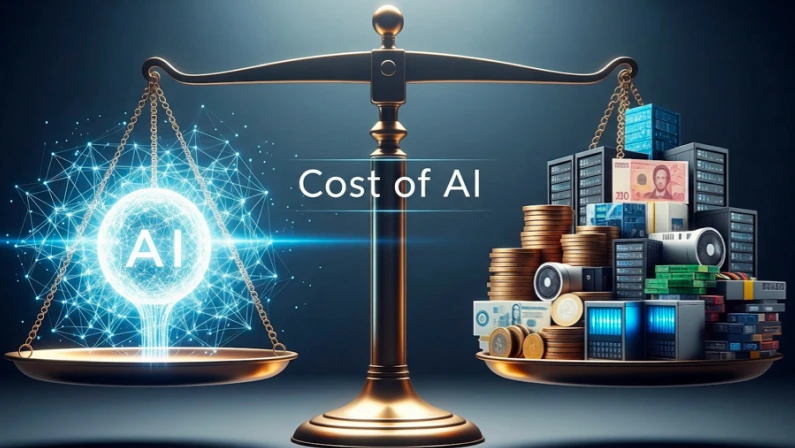
Let’s be honest—juggling multiple software tools can be a nightmare. Between endless updates, confusing interfaces, and steep learning curves, businesses are drowning in complexity.
That’s why more companies are making the switch to AI automation. It’s faster, smarter, and does the heavy lifting so teams can focus on what really matters.
The Concept of AI Automation and Its Growing Prevalence
AI automation is not a buzzword. It’s all about transforming the way businesses operate. From chatbots handling customer service to AI-driven analytics making data-backed decisions, automation is streamlining processes like never before.
Companies of all sizes are leveraging AI to cut costs, reduce errors, and improve efficiency. And the best part? It integrates seamlessly with existing workflows, making it easier than ever to embrace the future of work.
.webp)
The Pain Points of Complex Software
Traditional business software often feels more like a burden than a solution. Between confusing interfaces, high costs, and integration headaches, it’s no wonder companies are looking for a better way.
Steep Learning Curves
New software often requires extensive training, and not everyone has the time or patience for that. Employees struggle to navigate complex dashboards and endless features they may never use. Instead of increasing productivity, these tools end up slowing teams down.
High Maintenance Costs
Beyond the initial purchase, complex software comes with hidden costs—subscriptions, updates, and IT support all add up. Businesses end up spending more money just to keep things running smoothly. In the long run, these expenses can eat into profits without delivering proportional benefits.
Limited Flexibility and Scalability
What works for a small team today might not work for a growing business tomorrow. Traditional software often lacks the flexibility to scale with changing needs. That means companies either outgrow their systems or get stuck with bloated tools they don’t fully use.
Data Silos and Integration Issues
One of the biggest headaches? Getting different systems to talk to each other. Many traditional software solutions create data silos, making it hard to share information across departments. This leads to inefficiencies, duplicate work, and missed opportunities.
User Frustration and Low Adoption
If employees find a tool frustrating, they simply won’t use it. Clunky interfaces and complicated workflows can lead to resistance, forcing teams to revert to inefficient manual processes. When software becomes a roadblock instead of a solution, it’s time for a change.
Key Advantages of AI Automation
AI automation is changing the game by eliminating complexity and making processes smoother, faster, and smarter. Businesses are embracing it to improve efficiency, cut costs, and deliver a better experience for both employees and customers.
Increased Efficiency and Productivity
AI handles repetitive tasks in seconds, freeing up employees from complex software alternatives to focus on more strategic work. It reduces manual errors and streamlines workflows, making operations smoother. The result? Teams get more done in less time.
Reduced Operational Costs
With AI automation, businesses save on labor costs and expensive software maintenance. AI-powered tools can run 24/7 without the need for breaks, overtime, or additional hiring. This means more output with fewer resources.
Improved Accuracy and Reduced Errors
Humans make mistakes—AI doesn’t. Automated systems follow predefined rules with precision, ensuring data accuracy and minimizing costly errors. Whether it’s processing transactions or analyzing reports, AI gets it right every time.
Enhanced Customer Experience
AI-driven chatbots, smart recommendations, and automated support make interactions faster and more personalized. Customers get instant responses and seamless service, improving satisfaction and loyalty. When businesses make life easier for their customers, everyone wins.
Scalability and Flexibility
Unlike traditional software, AI solutions grow with your business. They adapt to changing needs, handle increased workloads effortlessly, and integrate with existing tools. Whether you’re a startup or an enterprise, AI keeps you ahead of the curve.

How AI Simplifies Processes
AI takes the complexity out of business operations by automating repetitive tasks, reducing errors, and streamlining workflows. Instead of navigating multiple software platforms, teams can rely on AI to handle data entry, customer interactions, and decision-making. With machine learning and intelligent automation, businesses can work smarter, not harder—leading to faster outcomes and better efficiency.
AI Specific Use Cases and Examples
From customer service to finance, AI-driven automation is helping businesses save time, cut costs, and enhance overall performance.
Customer Service
AI-powered chatbots and virtual assistants provide instant support, answering common questions and resolving issues without human intervention. This reduces wait times and improves customer satisfaction. Businesses can now offer 24/7 support without overloading their customer service teams.
Data Entry and Processing
Manually inputting and managing data is time-consuming and error-prone. AI automation can extract, validate, and organize data with minimal human oversight. Business process automation speeds up processes and ensures accuracy across various business functions.
Sales and Marketing
AI analyzes customer behavior and preferences to personalize marketing campaigns, recommend products, and optimize ad targeting. Businesses can generate more qualified leads and increase conversions. The result? More sales with less effort.
Finance and Accounting
AI-powered tools can automate invoice processing, detect fraudulent transactions, and even forecast financial trends. Businesses can reduce human errors and improve financial decision-making. This leads to better cash flow management and compliance.
Human Resources
Recruiting, onboarding, and employee engagement are made easier with AI-driven tools. AI can screen resumes, schedule interviews, and even predict workforce trends. HR teams can focus on building company culture instead of getting bogged down with paperwork.

The Transition from Complex Software to AI Automation
Switching from AI vs software requires careful planning, but the benefits are well worth it. By identifying key areas for automation and addressing challenges proactively, businesses can ensure a smooth transition.
Identifying Suitable Automation Opportunities
Not every process needs AI. Start by pinpointing tasks that are repetitive, time-consuming, or prone to human error. These are prime candidates for automation. The goal is to enhance efficiency without disrupting essential workflows.
Implementing AI Automation
Successful AI adoption requires the right tools and a clear strategy. Businesses should choose AI solutions that integrate seamlessly with existing systems and provide measurable results. A gradual rollout with employee training ensures a smoother transition.
Overcoming Potential Challenges
Concerns about job displacement, data security, and integration issues are common when adopting AI. Open communication, employee upskilling, and selecting trustworthy AI vendors can address these concerns. When implemented correctly, AI works alongside humans—not against them.
The Future of Business Efficiency with Leapify CRM
AI automation is no longer optional—it’s the key to staying competitive in a fast-paced digital world.
Leapify CRM helps businesses simplify workflows, enhance customer interactions, and drive productivity with intelligent automation efficiency.
Whether you’re looking to streamline sales, marketing, or customer support, we have the tools to make AI work for you. Ready to embrace AI-powered efficiency? Let’s get started today!



